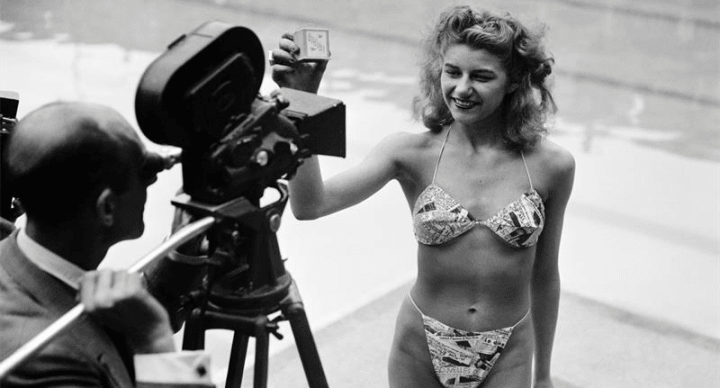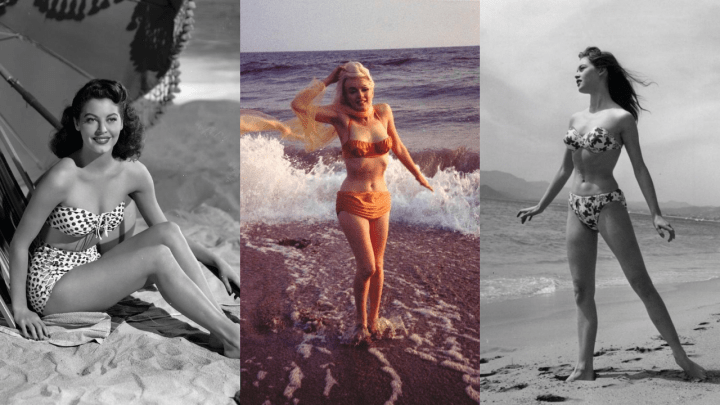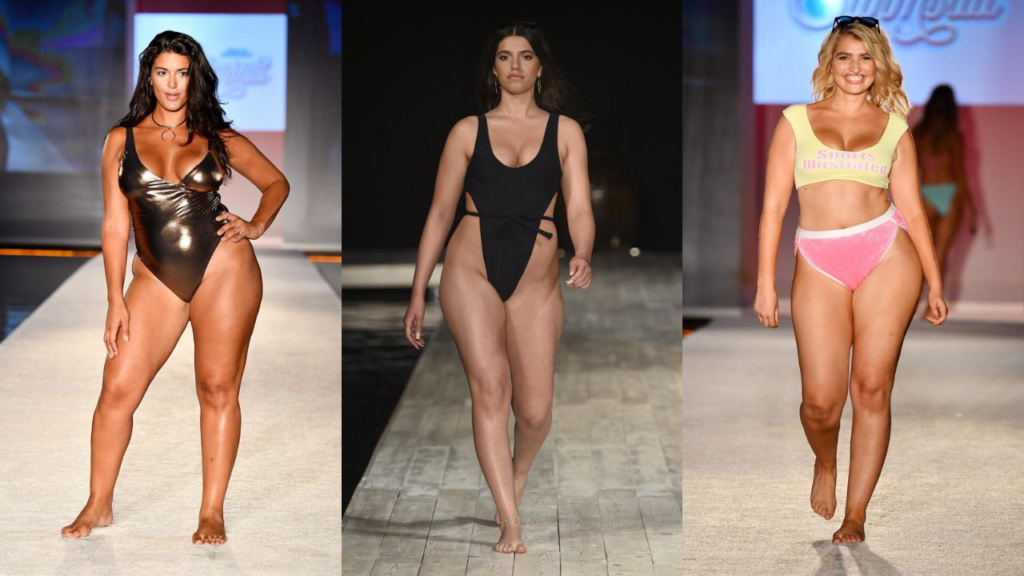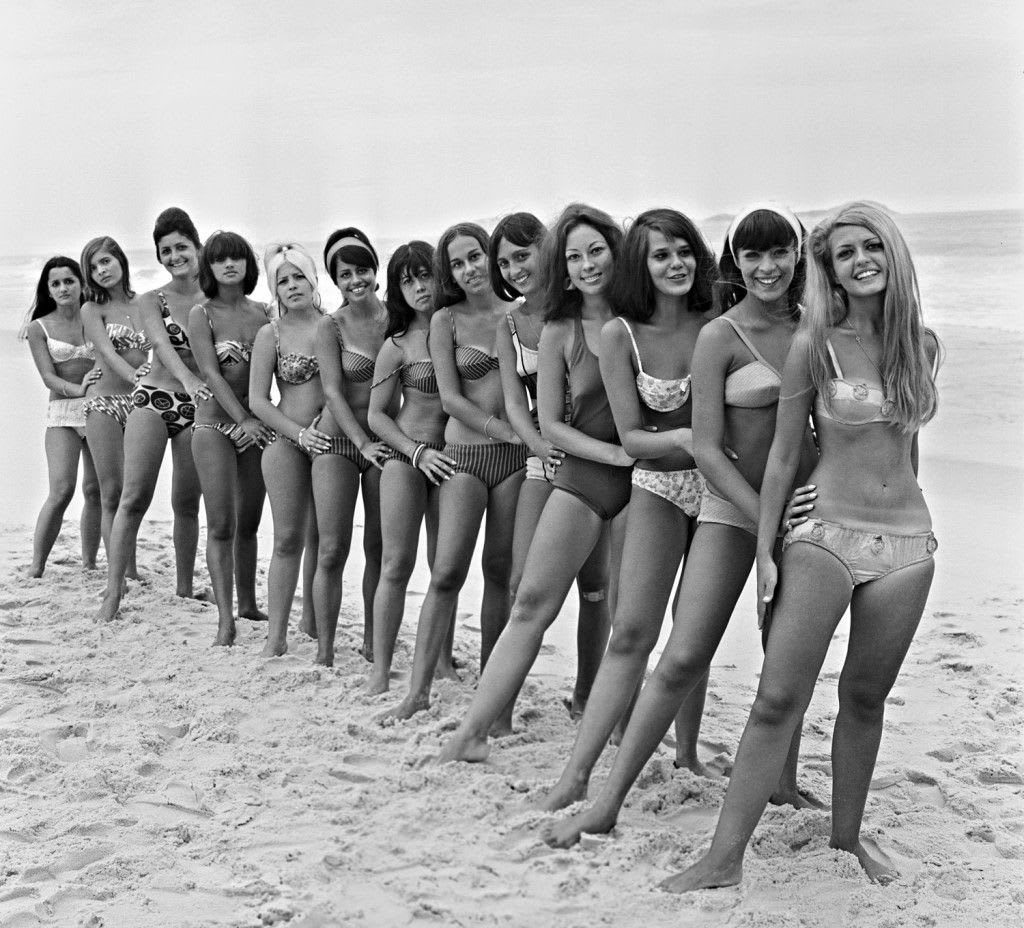With summer in full swing, it’s time to take a look at how the “itsy bitsy teenie weenie yellow polka dot bikini” got its name.
The bikini has become a summer staple in women’s closets all around the world. Despite being such a popular item today, the bikini started off as a controversial design. With summer in full swing, it’s time to take a look at how the “itsy bitsy teenie weenie yellow polka dot bikini” got its name.
The Creation of the Bikini
Two-piece bathing suits were all the rage during the 1930s, but the bikini we all know and love wasn’t created until 1946. Throughout World War II, several countries were rationing materials to keep up with the war effort demand. The U.S. government even called for a 10 percent reduction in fabric normally used in woman’s swimwear in 1943. Two-piece swimsuits began being made without the skirt panel. The design remained conservative, with only the midriff revealed.
This modernization eventually led French engineer Louis Réard to introduce the modern bikini on July 5, 1946, at Piscine Molitor, a popular swimming pool in Paris, France. He created the world’s first string bikini by using 30 square inches of fabric. The bikini, originally named Bikini Atoll, got its name after the first atomic bomb test site. This style of bikini was also the first to reveal the belly button.

Naturally, the bikini didn’t take off right away. Most modern French women loved the look, but the Catholic Church and mainstream media thought that the original design was very risqué for the times. For this reason, the bikini was initially prohibited in some European countries.
A Rise in Popularity
As word spread about this new product, so did the excitement surrounding the bikini. Contestants participating in the very first Miss World beauty pageant wore them in 1951. From that moment until 1960, the bikini was banned from the competition. Starlets Marilyn Monroe, Ava Gardner, and Brigitte Bardot each received major press attention once they wore bikinis throughout the 1940s and ‘50s.

As the 1960s rolled around, the bikini had become more accepted thanks in part to the growing youth movement. Sex was at the forefront of the decade with the invention of the birth control pill. Skirts were shorter, layers were shed and the bikini took centre stage. Throughout the decade, the bikini was represented on the covers of Playboy and Sports Illustrated, giving the design even more media coverage in Western society.
Movies also played a significant role in how the bikini was portrayed to the public. When Bond girl Ursula Andress emerged from the Caribbean sea in 1962’s Dr. No, she created the concept of what the modern-day femme fatale would become. The importance of the scene for female characters should not be undermined by the fact it also conceived the concept of the male gaze in cinema, where women are often only represented in film for men.
Raquel Welch produced a similar stir with her appearance in One Million Years B.C. (1966), where she dawned a deerskin bikini for the majority of the film. She became an instant pin-up girl as the poster with her publicity still would go on to sell millions of copies. Despite only having three lines in the entire film, she was touted as a dream girl to millions of people.
As time went on, the bikini has had several different faces and grown in popularity along the way. After the extreme demand for the swimwear during the 1960s, the 1970s saw the introduction of the thong bikini. More and more women were joining the fitness craze and felt more comfortable wearing skimpier bikinis. The bikinis of the 1980s and early 1990s took a backseat to the one-piece which found a resurgence. In 1994, the bikini became the official uniform of women’s Olympic beach volleyball to boost ticket sales.
Where the Bikini Stands Today
As of 2018, the global swimwear market has a value of $18.85 billion. There isn’t a larger swimwear industry than the bikini, which accounts for over $800 million annually and it’s expected to grow to a billion-dollar industry by 2025. The bikini has also produced several other by-products like bikini waxing and sun tanning.
It’s hard to ignore the controversy surrounding the bikini. Originally, the design was marketed towards skinny, white women, meaning most companies refused to hire plus-size, people of colour, or transgender models. Over time, the bikini industry has developed into a more diverse and inclusive space. Although the business has made significant changes, there is still a need to cast models that represent the vast majority of regular people. The swimwear and fashion industry must reject outdated norms in order to continue to grow.

From being a bold statement during the 1940s to becoming the go-to beachwear outfit that it is today, the modern bikini has been around for over 70 years and has shaped the swimwear industry as we know it.

